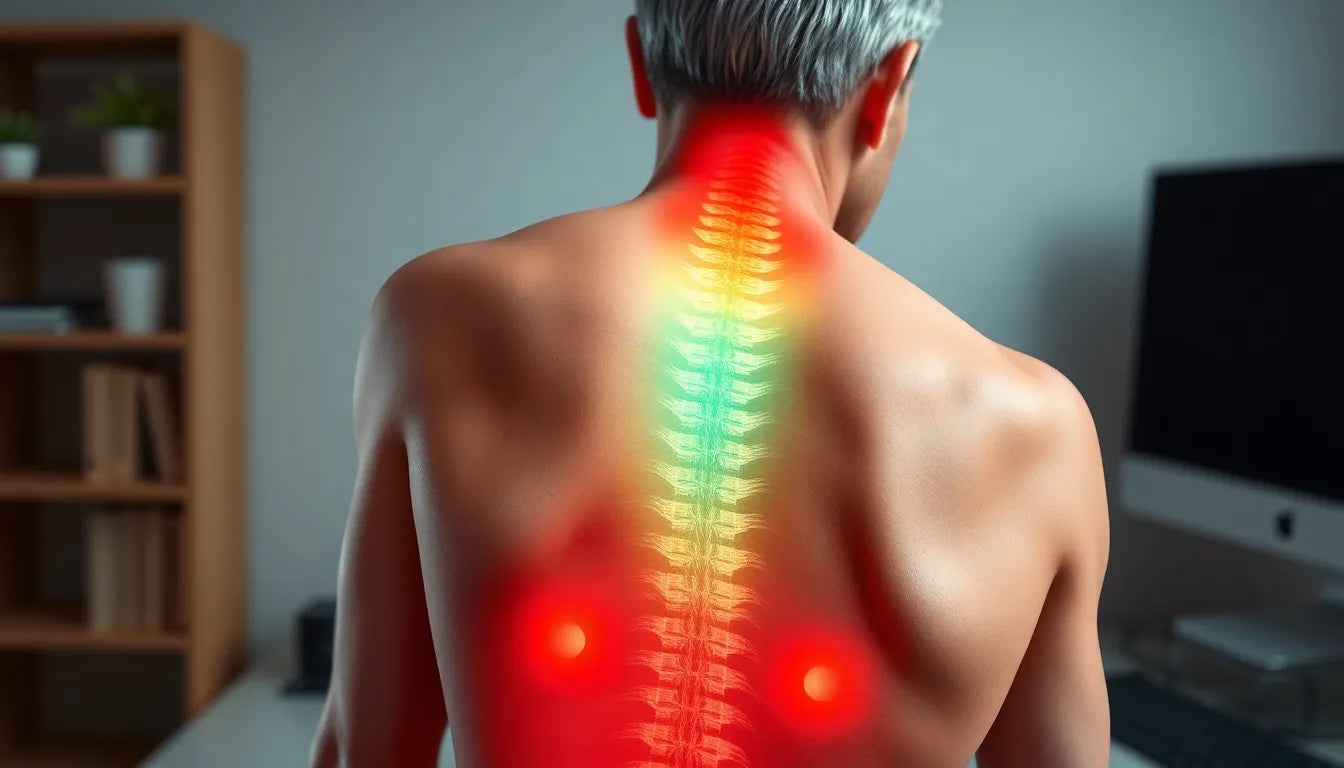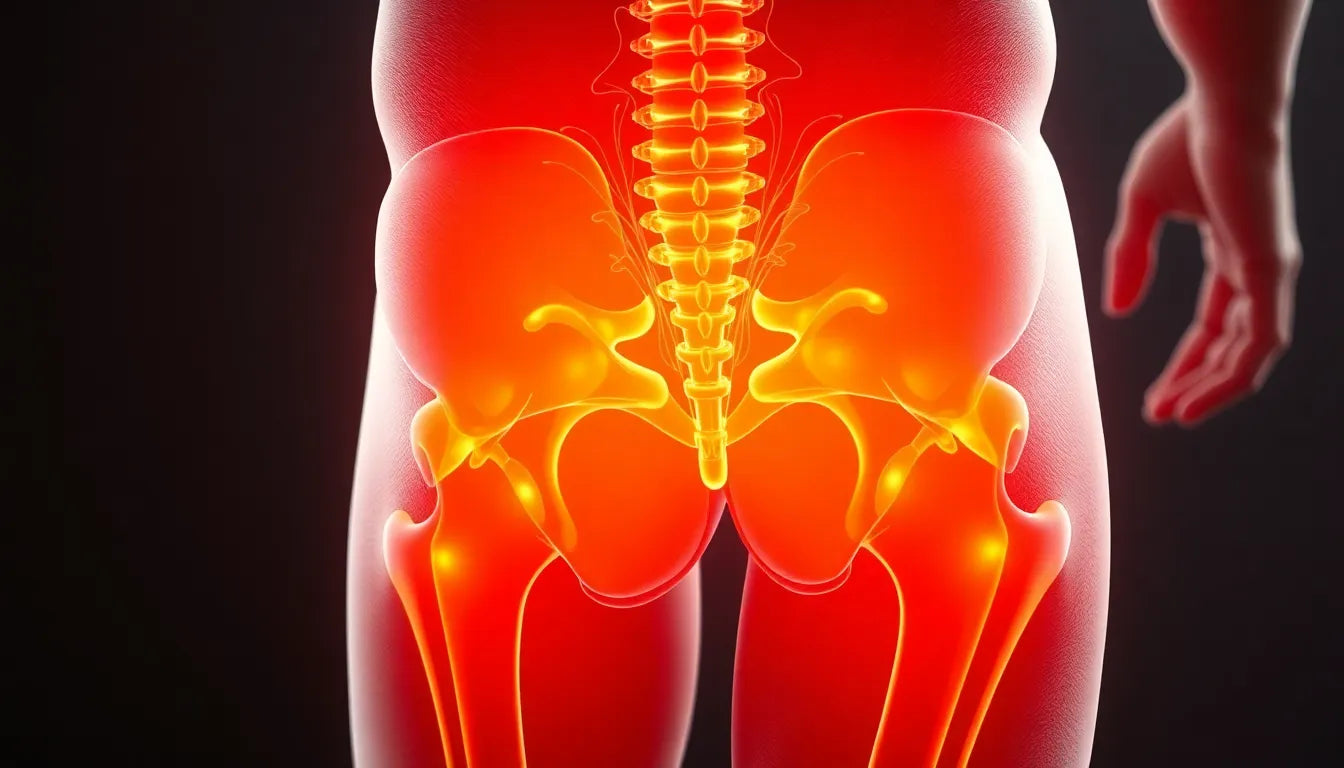Experiencing pain in the lower back and pelvis is an all-too-common issue that affects a significant portion of the population. This discomfort, often referred to as "ondt i lænden bækkenet," can interfere with daily life, making even the simplest tasks challenging. Whether you're trying to sit comfortably at your desk or enjoy a leisurely walk, these pains can severely impact your quality of life.
Understanding the symptoms of lower back and pelvic pain
Lower back and pelvic pain can manifest in various ways, each with its own set of challenges. Many individuals report pain that radiates to the hips, buttocks, thighs, and even legs. This radiating discomfort can make it difficult to pinpoint the exact source of the pain, complicating efforts to find relief. Additionally, stiffness and reduced mobility are common, particularly after prolonged periods of sitting or when making sudden movements. These symptoms can hinder your ability to perform routine activities, such as standing up or sitting down, and can even affect your sleep quality.
In more severe cases, individuals may experience numbness or altered sensation in the legs or groin, particularly if nerves are involved. This can lead to further complications, such as difficulty maintaining balance or walking without discomfort. It's essential to recognize these symptoms early and seek appropriate interventions to prevent them from worsening.
The purpose of this post
This blog post aims to provide a comprehensive overview of the causes, symptoms, and effective strategies for managing lower back and pelvic pain. By exploring these aspects, we hope to equip you with actionable insights that can make a real difference in your daily life. Whether you're dealing with mild discomfort or more severe pain, understanding the underlying issues and exploring potential solutions can empower you to take control of your well-being.
As we delve into the causes and treatment options, we'll highlight various approaches, including manual therapies, exercises, and ergonomic solutions, to help you find the relief you need. Our goal is to offer a balanced perspective that combines informative content with practical advice, ensuring you have the tools necessary to manage and alleviate your pain effectively.
Causes of lower back and pelvic pain
Understanding the root causes of lower back and pelvic pain is crucial for effective management and relief. Several factors contribute to this discomfort, often involving the muscles, joints, and nerves. One common cause is muscle and joint overload. Sedentary lifestyles or repetitive motions can strain the sacroiliac joints (SI joints), leading to discomfort and pain. This overload can result from prolonged sitting, heavy lifting, or repetitive movements, which are prevalent in many work environments.
Another significant factor is disc herniation. This condition occurs when the soft inner gel of a spinal disc pushes through a tear in the tougher exterior, potentially pressing on nearby nerves. This can cause localized pain in the lower back and radiating pain into the hips, buttocks, and legs. The sensation is often described as sharp or burning, and it can significantly limit mobility and daily activities.
Pelvic dysfunction is another contributor to lower back and pelvic pain. This condition can give the feeling of being "locked," affecting the back, hips, and legs. It often results from misalignment or stiffness in the pelvic region, which can be exacerbated by activities like sports, childbirth, or even falls.
Additional factors that may contribute to pain include childbirth, falls, sports injuries, and general overuse. Each of these can lead to muscle imbalances or joint misalignments, further complicating the pain experienced in the lower back and pelvis.
Relief and treatment options
Addressing lower back and pelvic pain requires a multifaceted approach. Manual therapies provided by chiropractors and osteopaths can be highly effective. These professionals use hands-on techniques to realign joints, reduce muscle tension, and improve mobility, offering immediate relief and long-term improvement.

Lumbar support belt
Adjustable belt that stabilizes and relieves lower back pain so you can stay active and comfortable.
Incorporating exercise and training into your routine is another crucial strategy. Targeted exercises can help loosen locked joints and improve muscle balance, reducing strain on the lower back and pelvis. Strengthening the core muscles, in particular, can provide better support for the spine and pelvis, alleviating pain.

Men's Posture Shirt™ - Black
Patented shirt that activates muscles and helps relieve pain and tension in the back and shoulders.
Ergonomic optimization is also essential for managing pain. Using ergonomic aids, such as specially designed sitting cushions, can relieve pressure on the lower back and pelvis during prolonged sitting. These tools help maintain proper posture, reducing the risk of muscle fatigue and joint strain.
Fortunately, the prognosis for lower back and pelvic pain is often positive. With dedicated treatment and lifestyle adjustments, most individuals can achieve significant relief and improved quality of life. Surgery is typically a last resort and only considered in cases of severe nerve involvement where other treatments have not been successful.
By understanding the causes and exploring these treatment options, individuals can take proactive steps to manage their pain. Whether through manual therapies, exercise, or ergonomic adjustments, there are numerous ways to find relief and regain control over daily activities. As you continue to explore these strategies, remember that a combination of approaches often yields the best results, providing a comprehensive solution to lower back and pelvic pain.
Holistic approaches to managing lower back and pelvic pain
When dealing with ondt i lænden bækkenet, it's vital to adopt a holistic approach that considers the entire pelvic anatomy and its role in movement and pain management. This perspective not only addresses the symptoms but also the root causes of discomfort. By understanding how the pelvis interacts with the spine and lower limbs, individuals can better manage their pain and improve overall mobility.
Holistic approaches often incorporate a combination of manual therapies, exercises, and lifestyle adjustments. Manual therapies, such as those provided by osteopaths and chiropractors, can help realign the pelvis and alleviate tension in surrounding muscles. These treatments are complemented by exercises that strengthen the core and improve flexibility, which are crucial for maintaining a balanced and pain-free posture.
Insights from patient experiences
Real-world experiences from individuals who have struggled with lower back and pelvic pain can provide valuable insights and reassurance. Many patients report significant improvements through a combination of targeted exercises, ergonomic adjustments, and professional therapies. For instance, incorporating daily stretches and strengthening routines has helped individuals regain mobility and reduce pain.
Case studies often highlight the importance of personalized treatment plans. What works for one person might not be as effective for another, emphasizing the need for tailored approaches. Patients who have successfully managed their pain often stress the importance of consistency in their treatment regimen and the benefits of seeking professional guidance to navigate their recovery journey.
Visual aids for understanding pain mechanisms
Visual aids, such as infographics and diagrams, can significantly enhance understanding of pain distribution and underlying mechanisms. These tools illustrate how pain radiates from the lower back and pelvis to other areas, such as the hips and legs, providing a clearer picture of the interconnected nature of these regions. By visualizing these pathways, individuals can better identify their symptoms and understand the importance of comprehensive treatment strategies.
Frequently Asked Questions
What are the most common symptoms of lower back and pelvic pain?
The most common symptoms include pain in the lower back that often radiates to the hips, buttocks, thighs, and legs. Stiffness and reduced mobility, especially after sitting for long periods or during sudden movements, are also common. In some cases, individuals may experience numbness or altered sensation in the legs or groin if nerves are affected.
How can ergonomic products help with pain relief?
Ergonomic products, such as sitting cushions, play a crucial role in pain management by providing support and reducing pressure on the lower back and pelvis. These products help maintain proper posture, which can alleviate muscle strain and joint stress, ultimately reducing discomfort during prolonged sitting.
Is surgery necessary for treating these pains?
Surgery is typically only considered in cases of severe nerve involvement where other treatments have not been successful. Most individuals can achieve significant relief through non-surgical options like manual therapies, exercises, and ergonomic adjustments.
Can lifestyle changes help reduce pain?
Yes, lifestyle changes can significantly impact pain reduction. Incorporating regular exercise, maintaining a healthy weight, and optimizing your workspace ergonomically can help manage and reduce lower back and pelvic pain.
What exercises are recommended for alleviating pain?
Exercises that target the core muscles, such as planks and bridges, are highly recommended. Stretching routines that improve flexibility in the hips and lower back, such as yoga or pilates, can also be beneficial in alleviating pain and improving mobility.
Kilder
- Min Osteopat. ”Låst Bækken.”
- Naprapatlandslaget. ”Bekkenplager.”
- Thrana Klinikken. ”Bekkenplager.”
- Hafaro. ”Bækkenløsning Behandling.”
- Helsenorge. ”Bekkenleddsmerter.”
- Kroppens Hus. ”Bækkenet Forklaret: Anatomi og Behandling af Bækkensmerter.”
- Oslo Universitetssykehus. ”Bekkenleddsmerter - Langvarige Operasjon.”


















